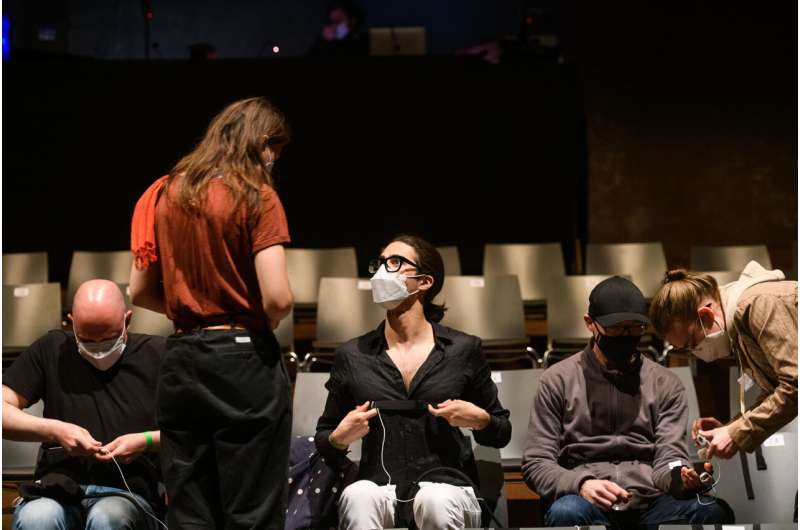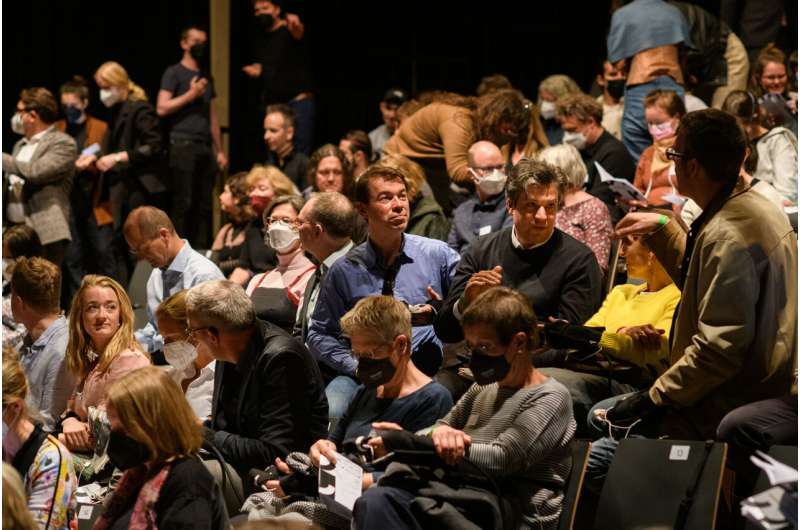This article has been reviewed according to Science X's editorial process and policies. Editors have highlighted the following attributes while ensuring the content's credibility:
fact-checked
peer-reviewed publication
trusted source
proofread
Classical symphonies may lead to synchronized physical responses

Movement and some physical responses—including heart rate, breathing rate, and the electrical conductivity of skin (suggesting excitement)—may synchronize between audience members at classical concerts, suggests a study of 132 people published in Scientific Reports. Individuals rated more highly for personality traits such as agreeableness or openness were more likely to synchronize with other audience members.
Synchronization can be used to describe the coordination of two unrelated processes at a statistically significant level, although the processes do not have to be occurring simultaneously. Between humans, synchronization is usually observed in physical responses such as breathing. Most synchronization in humans is caused by a direct social interaction with another person. However, synchronization can also be induced by non-social external factors.
Previous studies have shown that music may be able to induce synchronization in listeners, but there has been little investigation into whether concert audiences become synchronized.
Wolfgang Tschacher and colleagues observed 132 people while they listened to a concert consisting of three classical music pieces played by a string quintet: Ludwig van Beethoven's "Op. 104 in C minor," Brett Dean's "Epitaphs," and Johannes Brahms' "Op. 111 in G major."
The authors monitored the participants' movement with overhead cameras and their physical responses with wearable sensors. They also asked the participants to fill in questionnaires about their personality and mood both before and after the concert. The authors observed significant synchronization between audience members for movement, heart rate, breathing rate, and the electrical conductivity of skin (which indicates arousal of the sympathetic nervous system).
The greatest level of synchronization was seen in the breathing rate. Additionally, the personality traits of a listener were associated with their likelihood of synchronizing physical responses—those with agreeable or openness traits were more likely to become synchronized, while those with neurotic or extrovert traits were less likely to become synchronized.

The findings suggest that music may be able to induce synchronization in physical responses between audience members, and that personality traits may have an effect on the likelihood of an individual becoming synchronized with other audience members. The authors note that they experienced gaps in data collection due to prioritizing wearer comfort over data quality when choosing sensors, and suggest that more reliable data collection methods are developed for future studies.
More information: Wolfgang Tschacher, Audience synchronies in live concerts illustrate the embodiment of music experience, Scientific Reports (2023). DOI: 10.1038/s41598-023-41960-2. www.nature.com/articles/s41598-023-41960-2



















